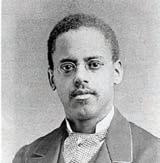






Wouldn’t it be nice to set the temperature of your house based more on comfort and less on your bank account? As the temperatures drop, homeowners around the world are finding that a WaterFurnace geothermal system is a smart way to reduce your carbon footprint and utility bills at the same time. WaterFurnace units use the clean, renewable energy found in your own backyard to provide savings up to 70% on heating, cooling and hot water. Contact Geothermal Concept today to learn more.
Arcadia/Mondovi Water Source Htg & Clg (715) 833-9001
Ashland/Iron River Brown Plmbg & HVAC (715) 682-0444
Beaver Dam/Green Lake Air Care, Inc. (920) 356-8860
Black River Falls/ Stevens Point Northern Indoor Comfort (715) 937-2676
Cashton/Sparta Flock’s Htg & A/C (608) 269-1500
Chaseburg/Viroqua Flock’s Htg & A/C (608) 269-1500
Clintonville/Oshkosh Van’s Refrigeration (920) 833-2051
Cornell/New Auburn Water Source Htg & Clg (715) 833-9001
Dodgeville/Baraboo Modern Htg & Clg (608) 767-2689
Eau Claire/Osseo Water Source Htg & Clg (715) 833-9001
Escanaba/Iron Mountain GPS Htg & Clg (715) 732-2111
Green Bay/Oneida Van’s Refrigeration (920) 833-2051
Hudson/Stillwater Geothermal Concept (612) 481-4020
Hurley/Park Falls
QS Plmbing & Mechanical (715) 685-4330
Madison/Black Earth Modern Htg & Clg (608) 767-2689
Marinette/Peshtigo GPS Htg & Clg (715) 732-2111


Marengo/Ashland QS Plmbing & Mechanical (715) 685-4330
Menomonie/Bloomer Water Source Htg & Clg (715) 833-9001
Neillsville/Medford Northern Indoor Comfort (715) 937-2676
New Lisbon/Shamrock Deans Refrig. & Heating (608) 372-6928
Oconto/Rhinelander Van’s Refridgeration (920) 833-2051
Osceola/New Richmond Sustainable Htg & Clg (651) 462-1300
Princeton/Waupun
All Phase Geothermal (920) 763-2301
Redwing/Wabasha Earth Energy Htg & Clg (507) 421-3156
Richland Center/Viroqua Strang’s Htg Electric Plmb (608) 647-2855
Sturgeon Bay/Denmark Van’s Refrigeration (920) 833-2051
Tomah/Oakdale Dean’s Refrig. & Heating (608) 372-6928
Wausau/Rhinelander Van’s Refrigeration (920) 833-2051

Westby/La Crosse Flock’s Htg & A/C (608) 654-5522
Winona/Pepin Earth Energy Htg & Clg (507) 421-3156
Wisconsin Rapids/ Marshfield Northern Indoor Comfort (715) 937-2676
February 2025 Vol. 85 No. 8
The Wisconsin Energy Cooperative News (Formerly Wisconsin R.E.C. News) has been published monthly and distributed since July 1940 to members of Wisconsin’s non-pro t, consumer-owned rural electric cooperatives. It is available to non-members for $13 per year or $35 for three years. Members pay $6.93 per year.
Published by the Wisconsin Electric Cooperative Association, 6405 Century Avenue, Suite 102 Middleton, WI 53562-2200 Rob Richard, president & CEO.
USPS number: 688-480.
Postmaster: please send address changes to Wisconsin Energy Cooperative News, 6405 Century Avenue, Suite 102 Middleton, WI 53562-2200.
Periodicals postage paid at Sun Prairie, Wis.
Send correspondence to Wisconsin Energy Cooperative News, 6405 Century Avenue, Suite 102, Middleton, WI 53562-2200. Phone (608) 467-4650.
Website: www.wecnmagazine.com.
Co-op Members: Please send address changes to your local electric co-op. Contact information can be found on page 18.
Rob Richard WECA president & CEO
Dana Kelroy editor
Beth Alesch associate editor
Julie Lund contributing writer
Ann Bailey graphic designer
Geri Miller advertising consultant
Jennifer Taylor editorial assistant
For advertising opportunities please email geri@weca.coop. The appearance of advertising or events does not constitute an endorsement of the products or services advertised. We reserve the right to refuse advertisers.





Cover photo courtesy of
Milton House Museum brings the Underground Railroad to
Cute co-op kids get cozy with their critters.































Winning our January search was Dane Bolz, a member of Clark Electric Cooperative. Dane said, “The little red cardinal is sitting on top of the charging station on page 10. I gured it was sign for me seeing as I lost my husband in November. He has come to me to say “hi.” That is an old saying about cardinals in case you didn’t know. Thank you.”
Now, we challenge you to nd this co ee cup to go with the breakfast recipes on page 20. Remember that the symbol can be anywhere and any size. One randomly selected winner will receive a Wisconsin Energy Cooperative News kitchen kit. One entry per household, please, and provide your permanent home or mailing address with your entry. Send entries by February 10.
Enter via the “Symbol Search” link on the homepage of wecnmagazine.com.
You can also enter by mail (don’t forget to include the name of your cooperative):
SYMBOL SEARCH WECA
6405 Century Avenue, Suite 102 Middleton, WI 53562-2200

Our February Wisconsin Favorites feature on page 24 takes us to the Milton House Museum in Rock County. The museum is a certi ed stop on the Underground Railroad and melds art and history into one interesting outing.
When asked about her favorite part of the museum, Executive Director Keighton Klos says it’s taking visitors to the cellar to show them the primary sources related to Andrew Pratt, a documented Freedom Seeker who passed through the Milton House.
“He self-emancipated. When he came to Milton, he lived here for a few years, and he moved up to Wells, Minnesota. We can follow him all the way to his death. He gets married, and he becomes a landowner and a respected member of his community. You can see his whole story arc from beginning to end,” said Klos.
This month’s cover is just a portion of the mosaic “Follow the Drinking Gourd,” but the entire mosaic can be seen above. Created by Connie Bier and Vicki Cottam, this art helps visitors absorb the history.
The mosaic features a young man traveling to Milton under a night sky. As was customary, Freedom Seekers used the moon, North Star, and constellations like the Big Dipper (or the drinking gourd) to navigate their way North to freedom. In those days, a hollow, dried gourd served as a water dipper.
Klos says of the mural, “We really just want people to have a place to re ect on what they’ve learned and what thoughts and beliefs were challenged when they were in the Milton House or maybe new things they learned. Art is such an interpretive thing. History is too. We all can hear the exact same story and take di erent stu away from it.” See more about the museum on page 24.
(Also, please see Rob Richard’s column on page 8 for instructions for the postcards in the center of the magazine. We need your help!)



Dana Kelroy Editor








































Joseph Mesec recently joined the Wisconsin Electric Cooperative Association (WECA) as director of government relations. Mesec’s experience includes work in both state government and trade association offices.
Mesec served as policy advisor in the office of former Assembly Majority Leader Jim Steineke, and as research assistant and committee clerk for State Representative Rob Swearingen (R-Rhinelander).
He also served as director of government services for the Wisconsin Dental Association, where he tracked state and local legislation and regulatory proposals, developed policy positions and strategies, and mobilized efforts to influence outcomes.
In early January, Governor Tony Evers declared an energy emergency in Wisconsin due to major winter storms that hammered much of the nation’s midsection with heavy snow, sleet, and ice. Winter storms Blair and Cora caused a shortage in access to heating fuel, including heating oil and propane.
Executive Order #253 provides a 30day waiver of certain state and federal hours-of-service restrictions, allowing suppliers to get caught up from weatherrelated delays.
The Federated Youth Foundation (FYF) has announced it is now accepting applications for the 2025 Charles Van Sickle Endowment Scholarship, which the Foundation board recently increased to $5,000. The scholarship will be awarded to a pre-law or law student, with a preference to a student who has an interest in cooperative law.
The scholarship was made possible by an endowment established in 2013 to honor Wisconsin’s renowned electric
cooperative lobbyist and attorney, the late Charles Van Sickle.
Applications can be found at www. weca.coop and must be received by the FYF office no later than April 1, 2025.
The North American Electric Reliability Corporation (NERC), the nation’s grid reliability watchdog, released its annual Long-Term Reliability Assessment in December which finds half of the United States is at increased risk of power supply shortfalls in the next decade. The Midcontinent Independent System Operator (MISO) region, which operates the electrical grid in 15 states including Wisconsin and part of Canada, is at high risk of shortfalls even at normal peak demand periods, according to the assessment.
The increase in demand for power due to AI data centers and the electrification of buildings and transportation, in combination with clean energy policies that replace baseload generation with intermittent resources is intensifying the supply-demand imbalance.
The Wisconsin Department of Natural Resources (DNR) has approved permits for Enbridge’s rerouted plan for the Line 5 project, which stretches 645 miles from Superior across northern Wisconsin and Michigan, to Ontario, Canada. The DNR issued wetland and waterway permits allowing Enbridge to begin preliminary construction. The DNR permits also include a stormwater discharge permit, clearing a hurdle for federal agencies to begin the permitting process under the Clean Water Act.
The U.S. Energy Information Administration (EIA) released its Short Term Energy Outlook which predicts U.S. power consumption will hit record highs in 2024 and 2025. According to the report, power demand is likely to
show 4,086 billion kilowatt-hours in 2024 and 4,165 billion kWh in 2025. That compares with 4,012 billion kWh in 2023 and a record 4,067 billion kWh in 2022. (Power demand was higher in 2022 than 2023 due to milder weather conditions.)
In December, the Joint Committee on Finance (JFC) approved a onetime transfer of nearly $2.4 million to the Department of Military Affairs’ Wisconsin Disaster Fund to help local governments, electric cooperatives, and Native American tribes with storm recovery costs that are not covered by the Federal Emergency Management Agency (FEMA) or insurance.
WECA President and CEO Rob Richard urged JFC to approve the measure, as many Wisconsin electric cooperatives experienced significant storm-related expenses in 2024 due to tornadoes and severe winter storms that caused widespread power outages.
The opportunity for co-ops to be eligible for funding from the disaster fund is a direct result of a WECA-backed legislative change included in the 2019 budget, which re-established electric coops’ ability to make direct application for aid from the Wisconsin Disaster Fund.
The Midcontinent Independent System Operator (MISO), the grid operator for 15 states, including Wisconsin and part of Canada, approved the largest portfolio of transmission projects in U.S. history.
It includes 488 projects covering more than 5,000 square miles. According to MISO, the projects are necessary to ensure reliability for the clean energy transition, and to support growth in the energy grid.
In Wisconsin, $4.1 billion in investments include two new 765 kV transmission lines that connect to Minnesota and Illinois, and also include portions of new 345 kV lines, and new substations and upgrades. MISO estimates the plan will support up to 12,257 jobs and spur up to $4.5 billion in total economic output.

At WECA, we take pride in rarely asking you to participate in a legislative call-to-action. I think some organizations overplay this card with a constant barrage of “urgent” messages. I believe it should be used selectively in extraordinary circumstances. I firmly believe we are at one of those moments. This month, I’m asking you to please take action to help pass Right of First Refusal (ROFR) legislation.
In my January column, “New Year Brings Renewed Look at Key Issue for Cooperatives” (available at wecnmagazine.com), I explained why this legislation is vital to electric cooperatives. While the bills are formally introduced in both the Assembly and Senate and assigned bill numbers, they are referred to as the “Right of First Refusal” or “ROFR” legislation.
As I stated last month, this legislation will give our incumbent transmission providers, in particular Dairyland Power Cooperative and American Transmission Company (ATC), the right of first refusal to competitively bid and build long-range transmission projects within their service areas. Because our electric cooperatives have ownership in both, Dairyland and ATC return on their investments for these projects are shared with your electric cooperative and will directly help to keep your electric rates lower. This won’t be the case if nonincumbent utilities build and maintain them. Please
see Julie Lund’s “Billion Dollar Bill” feature story on pages 10–12 for a more detailed explanation of what ROFR is and how it can benefit you.
Between pages 16–17 of this magazine, you’ll find perforated postcards addressed to your state representative and senator. Simply:
• Write your name and address
• Fill in your elected official’s name
• Affix a stamp and mail (minimum postage is $.56)
If you’re unsure who represents you, visit www. legis.wisconsin.gov and use the “Who Are My Legislators” tool, or call the Legislative Hotline toll-free at 1-800-362-9472. Please make sure all the information is filled out on the cards. By doing this, you will be letting your legislators know that you care about keeping your electricity rates affordable. Secondly, stay informed and engaged by signing up for Voices for Cooperative Power (VCP). This online advocacy tool keeps you connected with your state and federal legislators on ROFR and other energy issues that impact you. Use the QR code on the next page to join more than 12,000 Wisconsin cooperative advocates already working to make a difference.
Thank you for all your efforts to express your support for ROFR legislation with your state representative and state senator. It may sound cliché but it’s true, we need your voice…and your mailbox, more than ever to help get ROFR across the finish line. Thank you!



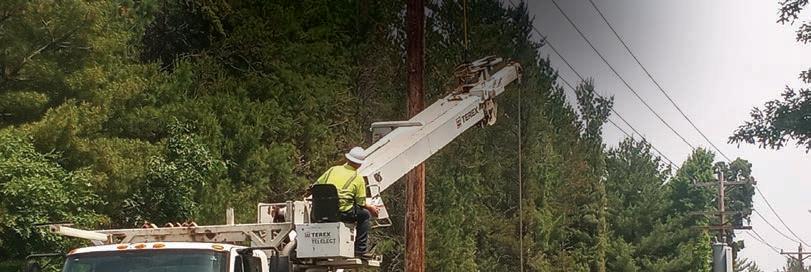


A Change in State Law Would Ensure Wisconsin Ratepayers Bene t from Historic Transmission Projects
This is a transformative time in the energy industry. After two decades of generally flat demand for electricity, business is on the brink of a big boom. There’s record-setting expansion of clean energy driving electric vehicle use and beneficial electrification of everything from lawnmowers to bikes. The nation is also seeing a resurgence in the power-hungry manufacturing industry. Add to that the advent of AI technology, along with crypto-mining and data center-driven demand for electricity is skyrocketing at an unprecedented pace.
The consulting group Grid Strategies released a report



in December that found load-growth forecasts keep growing exponentially and most recently predict a pace that means the demand for electricity will require at least 16% more generation by 2029. That is a very tall order for the complex, already capacity-challenged electric grid. Transmission is key to meeting electricity demand. On December 12, 2024, the Midcontinent Independent System Operator (MISO) Board of Directors unanimously approved the largest portfolio of transmission projects in the nation’s history. MISO, tasked with ensuring the power flows reliably and affordably across 15 states – including Wisconsin – and part of Canada, approved 488 transmission projects spanning 5,000 miles across the region. The $21.8 billion portfolio includes six long-term reliability projects to be located entirely or partially in Wisconsin.
A key feature of this phase is a 765kV line that will run across the Midwest region and ensure clean energy projects can access the grid and the power can flow to the areas that need it. Wisconsin is a net electricity importer, meaning the state already uses more power (about 10%) than utilities here generate. MISO says the 765-kV transmission “major interstate highway” is expected to “maximize value based on land use, line distances, transfer levels, and costs.”
The Wisconsin-based projects alone are a $4.5 billion business, and the Wisconsin Electric Cooperative Association (WECA), along with the state’s existing transmission companies, Dairyland Power Cooperative, Xcel
Energy, and ATC, are working to ensure Wisconsin ratepayers benefit from the financial advantage of building and owning the historic infrastructure.
Many states in the MISO footprint, including Indiana, North Dakota, South Dakota, Michigan, and Minnesota, have passed “right of first refusal” (ROFR) laws, which give incumbent utilities priority to build major transmission projects in those states. Under the MISO rules, transmission projects deemed beneficial to the MISO region are eligible for cost sharing, which means everyone in the entire region who benefits from the line is required to help pay for it via a charge on their electric bill. With ROFR, Dairyland would be more likely to ensure its members would benefit by seeing a return on the investment.
“In our case, the Midcontinent Independent System Operator is allowing the cost of these projects to be spread across the whole MISO footprint, and thus the utilities that get an opportunity to invest in those get a rate of return. Being a cooperative, we call it margin, so revenue above
If we don’t have a ROFR, it’s a huge, missed opportunity for Wisconsinites to save millions of dollars, and potentially up to a billion dollars.
our cost that we can then apply to future rates of our members and help keep rates lower than they would be without this investment,” explained Ben Porath, Dairyland Power Cooperative executive vice president & chief operating officer.
Without a ROFR bill in place, MISO selects the owner for key transmission projects using a long and expensive federal bidding process that begins with a $150,000 application fee. In committee hearings, a MISO representative confirmed the bidding process alone adds at least a full year to the time it takes to begin to build the transmission line. It also opens up the process to outside developers who are unfamiliar with the territory and do not have the easements and agreements in place that incumbent utilities do.
However, the biggest benefit of ROFR is the money it would save. For electric cooperatives like Dairyland, these cost savings are a direct benefit to its largely rural and suburban membership.
“If we don’t have a ROFR, it’s a huge, missed opportunity for Wisconsinites to save millions of dollars, and potentially up to a billion dollars,” said Ellen Nowak, ATC vice president, state and federal affairs, who explained the cost benefit goes beyond the advantage of ownership. MISO rules allow the incumbent utility to shift a significant amount of existing fixed costs (i.e., planning, accounting, etc.) throughout the MISO footprint, creating even more savings for ratepayers. A nonincumbent developer cannot do this, resulting in Wisconsin ratepayers paying more than their fair share.
It’s a major factor that some state legislators did not understand, or did not believe, when presented with ROFR legislation in 2024. The bill passed the Assembly but died in the Senate.
“We have been working hard to explain how it works, that the MISO rules allow an incumbent to spread out even more costs than a nonincumbent developer, resulting in greater savings even if a developer contends they can build the project cheaper,” Nowak said. “When ATC
builds a line, we don’t go hire new accountants, we don’t hire new engineers, we don’t add a new operating system. We use our existing staff and are able to put a portion of those costs into MISO’s formula, resulting in more costs being spread out across the MISO states.”
It’s a claim confirmed by Alan Felsenthal, a managing director with PricewaterhouseCoopers, who produced a report that details the accounting of a hypothetical transmission project, including a costbenefit analysis. The report finds that under the MISO rules, a $600 million transmission line, built by ATC and operated over 40 years, would net almost $213 million in savings. By contrast, if built and operated by a non-incumbent developer at the same cost, the project would cost Wisconsin ratepayers $214 million, a difference of $417 million from the hypothetical ATC project. Even if the out-of-state company bids the project 20% cheaper, at $480 million, over the life of the project, Wisconsin ratepayers would still pay, not save, $171 million, a difference of $384 million from the ATC project.
This legislation is our priority for 2025 because of how beneficial it would be for Wisconsin to retain control over the safety and reliability of our state’s power grid instead of ceding that control to federal regulators.
According to the report, incumbent utilities incur more savings because, “…certain construction costs and operating cost growth assumptions and MISO’s existing revenue requirement and cost allocation rules, the cost implications for existing ATC customers under the MISO framework suggests that an incumbent transmission developer offers a solution with lower total costs for existing customers as compared to a new developer. Among other reasons, this is due to existing costs allocated to ATC’s network customers being allocated among a larger portfolio of projects and under MISO’s cost allocation methods for projects that qualify as MVPs, or multi-value projects, these costs are shared among a larger group of customers for which existing ATC customers only pay a calculated percentage.”
“It is cheaper when an incumbent builds a project because of this ability to spread out more costs than a developer can. And that’s just a fact,” Nowak said.
In business, open competition generally leads to lower prices for consumers. With ROFR, Porath said, it still does. Projects are subject to rigorous state and federal regulatory and permitting requirements, with cost controls from a competitive process.
“We competitively bid for legal and other consulting services to help us in the regulatory and environmental permit phases of the project to help us prepare the applications, we competitively bid all the materials – the steel, the conductor. We competitively bid for the contractors to come and do the work. So really, we’re using our institutional knowledge, skills and understanding of the state and our working relationships with landowners to get efficiencies there, and then we are competitively bidding just about everything else that comes with one of these projects,” he said.
But time is running short. WECA, Dairyland, and ATC are feeling the urgency to get a ROFR bill in front of state lawmakers soon since MISO’s transmission project plan has already been released. This time, though, Porath and Nowak feel optimistic.
“I think it’s going to be significantly different for Dairyland this time because we are fully aligned with the other incumbent utilities in the state going into the legislative session,” Porath said.
Still, Jason Herbert, Dairyland Power Cooperative vice president, external affairs, says now is the time for electric cooperative members to make their voices heard and share their thoughts on ROFR with their elected state senators and representatives.
“If you see legislators at events, in the community, in Madison, it’s so important for constituents to voice support,” Herbert said. (For more information on what you can do, see the column on page 8.)
“This legislation is our priority for 2025 because of how beneficial it would be for Wisconsin to retain control over the safety and reliability of our state’s power grid instead of ceding that control to federal regulators,” WECA President & CEO Rob Richard said. “We want to have ownership, we want to have local control, we want to have a say in the process, and those things will drive cost savings for our members.”—Julie Lund
Voice your support for the ROFR legislation by tearing out the two postcards between pages 16 and 17 of this magazine and following the instructions from page 8 to send to your representatives in Madison.


As the demand for electricity continues to increase, America’s peak demand is forecast to grow by 38 gigawatts through 2029—the equivalent of adding another California-sized state to the nation’s power grid. Photo courtesy of Pixabay A single large data center may use over 100 megawatts of power, enough to power 80,000 households. Photo courtesy of Christina Morillo
Last month, we examined the dramatic increases in demand for electric power and noted that America’s peak demand is forecast to grow by 38 gigawatts through 2029––the equivalent of adding another California-sized state to the nation’s power grid. At the same time, power producers plan to retire more than 110 gigawatts of baseload, or always-available, generation by 2033.
When demand outpaces supply of any commodity––corn, gasoline, and electricity––prices tend to increase. In addition, there’s increasing concern about the potential for rolling brownouts and blackouts as power providers struggle to meet peak demands.
Local co-op members may not notice the impact of the supply/demand imbalance for some time, but it’s captured the attention of electric co-op directors and
their staffs.
“The leadership at many electric co-ops is seeing unprecedented growth in demand,” explains Stephanie Crawford, National Rural Electric Cooperative Association (NRECA) regulatory affairs director. A decade ago, a huge commercial project might boost a co-op’s total load by 20 or 30 megawatts. “Now they’re getting multiple requests for projects in the hundreds of megawatts,” she adds.
Artificial intelligence (AI) and cloud computing are key drivers of this added demand. As use of AI skyrockets and a greater share of computer applications and storage migrate to the cloud, all that data needs to be stored somewhere. Data centers, which are massive groups of highcapacity computer servers, provide the most efficient way to handle it.
According to the U.S. Energy Department, data centers can consume as much as 50 times the energy per floor space of other types of commercial buildings. A single large data center may use over 100 megawatts of power, enough to power 80,000 households. Data centers already account for nearly 2% of the nation’s electricity use, and the Electric Power Research Institute predicts that will grow to 9% by 2030.
“It’s not only a question of needing to build or obtain more capacity, but in many cases, also creates questions about the availability of transmission and distribution,” Crawford notes.
For electric co-ops, the efforts fall into two categories: increasing knowledge and building relationships. A generation ago, power supply
discussions were a fairly straightforward and easily understood process for co-op directors, given the widespread availability of baseload generation. Today’s directors increasingly find themselves learning about sophisticated and challenging issues as they weigh decisions affecting their co-op’s operations and financial viability for years to come.
Co-ops have long emphasized relationship-building, and Crawford stresses the importance of doing that with the companies developing large projects such as data centers.
“Early and frequent conversations between the co-op and the entities seeking additional energy are critical,” she explains. “That has to include honest conversations about the costs and timelines involved.” For example, while a data center project might ultimately need a significant supply of megawatts, if its operations are phased in gradually over several years, the co-op may have additional time to prepare for the maximum load. They might consider creating a partnership with the project owner to develop new generation assets on the project’s site, reducing transmission concerns.
The large tech companies involved in deploying data centers and similar projects are highly sophisticated and well-resourced. They tend to be less interested in obtaining the lowest cost and more focused on reliability, Crawford explains. “What we’re hearing from co-ops is that the companies building data centers typically have done their homework before they start talking to co-ops. Many are anxious to develop their projects at a faster pace than the co-op may be accustomed to.”
While the developers may be ready to pay for the substantial infrastructure upgrades needed to serve their data centers, she notes that the conversations may end up focusing more on project timelines and data center obligations to remain as co-op memberconsumers. In addition to supply chain issues related to transformers and other components that are in increasingly short supply,
projects may face regulatory delays at all levels.
In addition to preparing for projects from organizations new to the co-op, Crawford notes the importance of co-op leaders keeping a finger on the pulse of their existing commercial accounts. “Being proactive and reaching out to understand how a commercial account’s energy needs may be changing in the coming years will inform conversations and decisions about timing, rate design, and other factors, even if they’re not making specific requests yet. That will help the co-op serve emerging needs while protecting the reliability for all of its members.”
For more than four decades, business writer Scott Flood has worked with electric cooperatives to build knowledge of energy-related issues among directors, staff, and members. Scott writes on a variety of energy-related topics for the National Rural Electric Cooperative Association, the national trade association representing nearly 900 electric co-ops.




“I wear my DailyNergy Knee Sleeve and pain & stiffness go away!”

Made from an extremely elastic blend of nylon, spandex, and latex that contours to each knee offering support and compression where you need it
DailyNergy Knee Sleeves feature special 3D knitting technology that is effective in providing stable pressures to stabilize and support your knee. The braces also keep your knee warm and reduce stiffness; they are the best companion for your daily activities.
FOR WORK OR PLAY! - Suitable for all activities and exercises that involve a great amount of stress on your knees. Comes 2 sleeves per package.
Optimal Comfortable Compression - Well-balanced between compression and comfort, these braces disperse the pressure and improve circulation around your knee area. Whether you’re walking or working, the braces provide you an adequate compression without restricting your movements.

5 Sizes to Choose From:
Medium:13"-16.5”
Large: 16.5"-18.5"
XLarge:18.5”-21.5”
2XL: 21.5”-24”
3XL: 24.5”-27”
To get the right size, Please measure the circumference of your thigh 4” above the center of your knee
“Within moments of putting on my knee sleeve my knee feels 100% better!” -Jonas Yoder Easy to put on! Easy to take off!
“I never had pain -free feet – UNTIL NOW!”
Breakthrough design improves blood flow, swelling, boost oxygen flow, and eliminate foot fatigue –naturally in as little as 5 minutes! Good news comes in the form of a painreducing, circulation-boosting sock design from DailyNergy.
Better Blood Flow!
This ‘miracle sock’ is made from proprietary blend of nylon and poly materials, which are optimally constructed to make a DailyNergy sock.
DailyNergy socks feature graduated compression which exerts the greatest degree of compression at the ankle, and the level of compression gradually decreases up the socks. This forces the blood to move upwards, where there is more space.
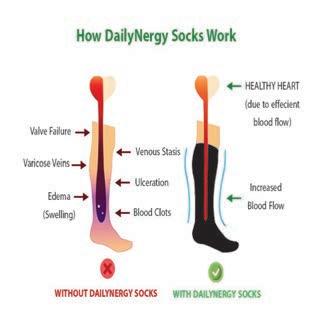







Recipe and photo courtesy of the National Honey Board at www.honey.com.
BREAKFAST POLENTA
2 cups water
2 cups whole milk
1/2 tsp kosher salt
1 cup cornmeal
2 Tbsp honey
2 Tbsp unsalted butter
1 tsp ground cinnamon
4 tsp good-quality berry preserves Honey, for drizzling

In a medium saucepan, bring water, milk, and kosher salt to a low boil over medium heat. Slowly add cornmeal, whisking out lumps. Reduce to low heat, simmer, and stir continuously until thickened, approx. 15–20 minutes. Stir in honey, butter, and cinnamon until butter is melted and ingredients are combined.
HONEY TOASTED WALNUTS
3 Tbsp honey
1 tsp ground cinnamon
1/4 tsp kosher salt
1 cup raw walnut halves


Preheat oven to 350 degrees. Line a sheet pan with parchment paper, set aside. Combine honey, cinnamon, and Kosher salt in a mixing bowl. Add walnuts and coat evenly. Spread coated nuts on a lined sheet pan. Bake until toasted (approx. 10–12 minutes). Cool before topping. Divide polenta into 4 small bowls, top with berry preserves, honey toasted walnuts, and drizzle with honey.


Recipe and photo courtesy of the National Honey Board at www.honey.com. .
1-1/4 cups all-purpose flour
1 cup rolled oats
2 lemons, zested and juiced
2 Tbsp baking powder
1/4 tsp salt
2 cups unsweetened coconut milk or other milk of choice
2 eggs
2 Tbsp honey
2 Tbsp oil
1 tsp lemon juice or vanilla extract, optional
2 Tbsp poppy seeds
Butter and honey, for serving
Add the flour, oats, and lemon zest to a blender. Cover and blend at medium speed for 10–15 seconds or until the oats break down and everything has a consistent texture. Pour into a large mixing bowl. Mix in the baking powder and salt. In a second bowl, mix the coconut milk, eggs, honey, oil, and lemon juice or vanilla extract until smooth. Pour into the dry ingredients and mix gently until everything is incorporated. Stir in the poppy seeds. Let the batter rest for 10 minutes. It will be very thin and foamy. Heat a nonstick griddle or frying pan over medium heat. Add a pat of butter and let melt. When the butter is melted, add 1/4 cup of pancake batter. Cook for 2–3 minutes or until the top of the pancakes starts to look dry. Flip and cook another 1–2 minutes, until golden brown. Repeat with remaining batter, adding more butter to the pan as needed. Serve with butter and honey. Makes 6 (two-pancake) servings.

PORRIDGE
1 (13.5 oz) can of coconut milk
1 Tbsp water
1/2 cup milk of choice
2 Tbsp honey
Recipe and photo courtesy of the National Honey Board at www.honey.com.
CURRIED HONEY
1 tsp curry powder
2 Tbsp honey
In a small bowl, mix the curry powder and the 2 tablespoons of honey together and set aside.
Pinch of salt
1 cup rolled oats
4 dates, seeds removed, cut into small pieces
3 tsp shredded coconut, toasted
In a medium saucepan, bring coconut milk, water, milk, 2 tablespoons of honey, and salt to a gentle boil over medium-low heat. Stir in oats; simmer on low heat and stir occasionally for about 10 minutes. Oats should be soft and porridge should look cohesive and silky. Scoop porridge into 6 bowls and evenly distribute the cut dates, toasted coconut, and a drizzle of curried honey on top.
NOTES: You can make this recipe gluten-free by using gluten-free oats. Oat milk is recommended for your milk of choice.

Recipe and photo courtesy of the U.S. Highbush Blueberry Council.
1 loaf (14 oz) egg challah or brioche bread
4 oz reduced-fat cream cheese
2 cups fresh or frozen (and thawed) blueberries, divided
8 eggs, beaten
1-1/2 cups milk
1/4 cup maple syrup
1/4 cup melted butter
Preheat oven to 350 degrees and grease a 9-x9-x2-inch baking dish. Remove crusts from bread; cut into 1-inch cubes. Cut cream cheese into small cubes. Place half of the bread cubes into the prepared baking dish. Scatter cream cheese cubes and 1 cup of blueberries over the bread. Top with remaining bread cubes and blueberries. In a bowl, combine eggs, milk, maple syrup, and butter. Carefully pour over the bread mixture. Bake until a knife inserted in the center comes out clean, approx. 1 hour. Cover with aluminum foil if edges brown too much. To serve, cut into squares and top with additional maple syrup, if desired.
RECIPE COURTESY OF LAURA BERG, IOLA
Submit your favorite recipes to be featured on our reader recipe page. Email to jennifer@weca.coop or submit directly at http://wecnmagazine.com/submit-a-recipe/.
PLEASE NOTE: Recipes submitted must include quantities for all ingredients. If no measurements are used, your recipe will not be printed. Due to food safety issues, we cannot accept canning recipes.
REQUESTS FROM OUR READERS
An online reader is looking for recipes using meatballs.
SEND TO: WECN, Reader Recipes, 6405 Century Avenue, Suite 102 Middleton, WI 53562-2200 or jennifer@weca.coop
2 cups uncooked spiral pasta (or ziti, medium-sized shells)
2 lbs ground beef 2 small onions, chopped 1 garlic clove, minced 1 (24–26 oz) jar spaghetti sauce
1 (4.5 oz) can sliced mushrooms, drained 1/2 cup sour cream 1/2 lb processed cheese, cubed (such as Velveeta) 2 cups shredded mozzarella
Cook pasta according to package directions. Brown ground beef, onions, and garlic; drain grease. Stir in spaghetti sauce and mushrooms, simmer for 20 minutes. Place 1/2 cup of meat sauce in a greased 2-1/2 quart baking dish. Place half of the pasta over the meat sauce. Layer another 1/2 cup of meat sauce on top of the pasta; spread with sour cream. Top with cubed processed cheese, remaining pasta, and meat sauce; sprinkle with mozzarella cheese. Cover and bake at 350 degrees for 25–30 minutes; then uncover and bake 5–10 minutes longer until bubbly.
RECIPE COURTESY OF SHIRLEY JOHNSON, WARRENS
1 pre-made pastry for a single crust pie
8 oz cheddar cheese, divided 1-3/4 cups French fried onions, divided 4 eggs 1/2 cup milk
1 Tbsp honey mustard 1/8 tsp nutmeg
1 (13.5 oz) can chopped leaf spinach, well-drained
Heat oven to 375 degrees. Line a 9-inch pie pan with prepared crust and ute the edges. Cover the bottom of pie shell with 1 cup of cheese; then sprinkle 1 cup of the fried onions over the cheese; set aside. In a small bowl, beat the eggs, milk, mustard, and nutmeg. Stir in spinach and pour mixture over the fried onions in the pie shell. Bake approx. 35–40 minutes until an inserted knife comes out clean. Remove from oven and sprinkle with remaining cheese and fried onions. Heat approx. 1–2 minutes more until the cheese melts. Let stand 5 minutes; serve hot. Yields 6 servings.
RECIPE COURTESY OF JAN THOMPSON, ELLSWORTH
This recipe is easy, delicious, and a great make-ahead dish for company.
1 (16 oz) pkg thin spaghetti noodles, broken into thirds, cooked al dente, and drained
1 (16 oz) pkg frozen broccoli orets, cooked 5 minutes
2 cups cooked chicken, cubed
2 (10.5 oz) cans cream of chicken soup
1 cup mayonnaise (such as Hellman’s)
1 tsp lemon juice
2 tsp yellow curry powder
2 cups shredded cheddar cheese
In a buttered 9-x 13-inch glass or metal pan, layer (in order) cooked noodles, broccoli, and chicken. Mix soup, mayonnaise, lemon juice, and curry powder in small bowl and pour over layered mixture. Sprinkle cheddar cheese over the top. Bake covered at 350 degrees for 1 hour. To serve, cut into pieces like lasagna. Serves 8. NOTE: You may also mix everything together in a large bowl vs. layering the ingredients and place in the 9-x 13-inch pan.
RECIPE COURTESY OF LINDA CALAWAY, MAUSTON
A traditional main course meal that has been in our family for decades.
3/4 cup butter
3/4 cup all-purpose our
1 Tbsp beef bouillon granules
2 tsp onion salt
2 tsp pepper, divided
2-1/4 cups milk
1 (14.5 oz) can chicken broth
1 Ib Polish sausage or smoked kielbasa
1 (12 oz) carton small-curd cottage cheese
9 lasagna noodles, cooked and drained
1 (16 oz) jar sauerkraut, rinsed and squeezed dry
2 cups shredded Monterey Jack cheese, divided
In a saucepan, melt butter; stir in our, bouillon, onion salt, and 1 teaspoon pepper until smooth. Gradually stir in milk and broth; bring to a boil. Cook and stir for 2 minutes or until thickened. Add sausage, heat through. In a bowl, combine the cottage cheese and remaining pepper. Spread 1 cup sausage mixture in a greased 13-x 9-x 2-inch baking dish. Layer with three noodles, a third of the sausage mixture, half of the cottage cheese mixture, half of the sauerkraut, and 3/4 cup Monterey Jack cheese. Repeat layers. Top with remaining noodles and sausage mixture (dish will be full). Cover and bake at 350 degrees for approx. 50–60 minutes or until bubbly. Sprinkle with remaining Monterey Jack. Bake 5 minutes longer or until the cheese is melted. Let stand for 15 minutes before cutting.
RECIPE COURTESY OF ELAINE BRUNNER, ARKANSAW
This was a favorite hot dish recipe of my Aunt Agnes.
2 lbs ground beef
1 cup celery, chopped
1 cup onion, chopped
2-1/2 cups crunchy chow mein noodles
1 (10.5 oz) can tomato soup
1 (10.5 oz) can cream of mushroom soup
10.5 oz water
1 (8 oz) can water chestnuts, sliced and drained
1 (4 oz) can sliced mushrooms, drained
2 tsp soy sauce
1/2 cup cashew nuts
Brown meat, celery, and onions. Combine meat mixture and all remaining ingredients and pour into a prepared baking dish and bake at 350 degrees for 1 hour.






















$299ea.

Minimum order of 5 coins
GENERATIONAL WEALTH is of paramount significance as it represents a beacon of financial stability. It serves as a tangible testament to the hard work, diligence, and financial acumen of previous generations, offering a solid foundation upon which future generations can build their dreams and aspirations.
American Gold Reserve is releasing Government issued $5 Gold American Eagles completely free of dealer mark-up for only $299 each. These beautiful $5 Gold American Eagles are a perfect way to enter the gold market. They are set for immediate public release and will sell out fast.
• Free of dealer markup.
• Protection against inflation and deflation.
• Gold offers financial cover during geopolitical uncertainty.

• Good portfolio diversifier.



The Underground Railroad, a secret network of people, routes, and safe houses, had a mission to save and free enslaved people from as early as the late 1700s. Often, the destination for these Freedom Seekers was Canada. Wisconsin has a few documented Underground Railroad stops, but only one is open to visitors today.
Though the Milton House Museum was started in the 1950s, the structure and story date back to 1844. Joseph Goodrich opened The Milton House Inn and is also credited as the founder of the town of Milton. As an active Seventh Day Baptist Church member, his religious beliefs led him to be an abolitionist.
His successful stagecoach inn is documented as a stop on the Underground Railroad. The Milton House is certified with the National Park Service’s Network to Freedom program and, in 1998, was designated a National Historic Landmark. Due to the secretive nature
of the Underground Railroad, historic documentation is often hard to come by.
“You have to have primary documentation showing that you actually were on the Underground Railroad, which could be difficult because a lot of underground history is oral. So, we don’t just say well, we think they worked on the Underground Railroad. We have documentation from that time period that says, yes, absolutely that’s what they did,” said Keighton Klos, Milton House executive director.
Preserving History
The museum sees around 10,000 visitors annually, of which about 3,000 are school kids on field trips. Klos recognizes the importance of sharing the story of the Milton House.
“When you look back at Black history in the United States, it’s very hard to find positive stories to tell. That can be difficult for Black students or Black people to
study their history because a lot of it is not good. The Underground Railroad was the most extreme form of resistance to enslavement that Black people did… It’s hard to know what actually happened because people were doing it in secret,” said Klos. “The majority of people running the Underground Railroad and helping were other Blacks. When you look at what you had to do to be successful on the Underground Railroad—you had to be extremely smart and extremely physically capable. It took just a ton of courage, and foresight, and determination. That’s the twist I guess we’re trying to put on the Underground Railroad—come and learn that these were not just people sitting on the plantation waiting for white people to come save them. They were taking the initiative. They were doing these extremely dangerous things, and they were really successful.”
Dave Warren, a longtime member of Rock Energy Cooperative, has been a volunteer docent for three years and a museum board member for one year. He calls his volunteer work at the museum his “dream job,” a dream that started decades ago in his childhood.
“My mother was a very smart lady. In the summertime, I think she may have gotten tired of me, and she would always give me a quarter. That’s what it cost to visit the Milton House Museum back in those days,” said Warren. “One summer, she sent me to the Milton House probably a dozen times so that by the end of the summer, I thought I could do the tour better than any of the other volunteer docents that were there.”
“This place is so important to our community, the state, and really the entire country because we’ve got a really great story to tell. On a personal level, it’s important to me because I’ve just grown up with the place,” said Warren.
He leads many tours, but one tour member on a school trip stands out.
“I would guess she was in fourth
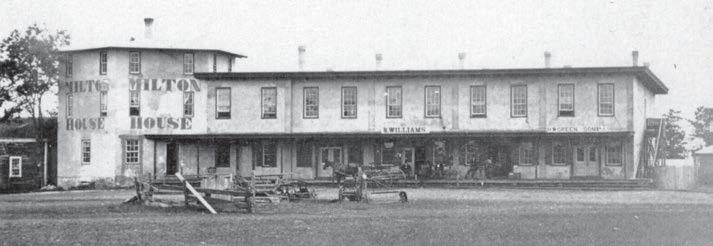



grade. She came from the Milwaukee Public Schools. After the tour, I asked if anybody had any questions, and she looked at me and she was so serious she said: ‘If slavery ever comes back, will this still be a good place for us to come?’” said Warren.
“It breaks your heart that a kid is even concerned about that,” said Klos. “Again, it’s that she put the connection together that the Milton House was a safe place for people to come that were in trouble. I think it’s very heartbreaking, but also in a little bit of a heartwarming way that we can talk to them about slavery is why it’s not going to come back,” said Klos.
One notable feature of the museum is Goodrich’s hexagon building design. His six-sided stagecoach inn is unique, but no one knows why he designed it that way. One theory is that he designed rooms to fit perfectly with small nooks for the beds. Another theory is that since it’s open
in the center, it aids in ventilation with a window facing the wind, no matter the direction of the wind. Another theory is that evil spirits reside in square corners, so by opening up the corner, they would eliminate bad spirits.
“Eight-sided buildings were kind of en vogue back in those days,” said Warren. “We’ve seen octagon houses. So, I always challenge people to tell me where they’ve seen another six-sided building,” said Warren.
The shape isn’t the only unique aspect of the building. Goodrich also invented his own building product, which was a primitive form of concrete that resembled grout. It was made of sand, gravel, water, and slate lime mined from a quarry just east of the property.
“I don’t know how accurate this is, but a lot of people actually recognize the Milton House as the oldest still-standing poured concrete building in the United States,” said Warren.
The most memorable part of the Milton House Museum property is the underground tunnel that connects the

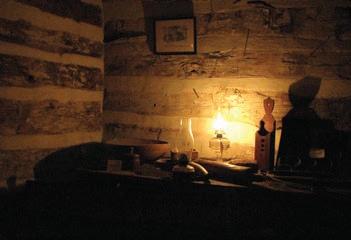


root cellar of the inn with the log cabin on the property. It is believed that Freedom Seekers would have entered through the cabin and traversed the 45-foot-long tunnel to their hiding place.
“I think it’s unique that the Underground Railroad is a metaphor, yet a lot of people think it really was underground,” said Warren. “While that’s not the case, we actually do have an underground passage that was helping to facilitate the movement of enslaved people.”
“The tunnel, especially, can be an extremely emotional experience,” said Klos. “It is not uncommon for a tour guide to get to the other end of that tunnel and have to give people a few minutes to compose themselves.”
Another feature not to be missed is the three-story, immersive mural painted by local artist Larry Schultz. Visitors start on the top floor, where the mural shows life on a plantation.
“You start at the top, it’s daytime, and then as you get to the second floor, it’s supposed to be more like twilight, and then as you go down that last set of stairs, it’s nighttime,” said Klos. “It really helps get your brain into that mindset, so when you get into the cellar, and we start talking to you about Freedom Seekers and what their experience was, you forget that you are in the modern time.”
“That’s the power of art. It’s able to transport people and does a lot of heavy lifting for us as docents,” said Klos.
Art also brings history alive through a nighttime, backlit tile mosaic called “Follow the Drinking Gourd” (see cover and page 4). The drinking gourd refers to the Big Dipper and how Freedom Seekers used the night sky
to navigate to freedom.
“We really just want people to have a place to reflect on what they’ve learned and what thoughts and beliefs were challenged when they were in the Milton House or maybe new things they learned. Art is such an interpretive thing. History is too. We all can hear the exact same story and take different stuff away from it,” said Klos.
Planning a Visit Klos says the Milton House Museum is a year-round experience but does have limited winter hours. She and Warren strongly encourage visitors to call ahead to make reservations to be sure a volunteer docent is available for a tour.
The museum also offers audio tours through a downloaded app on visitors’ phones. However, visitors will still need to observe museum hours.
The museum hosts Civil War Living History Days for visitors planning for early summer travel on May 17 and 18. The weekend includes Civil War reenactments and an Abe Lincoln impersonator.
Klos hopes that regardless of when folks visit, they can take lessons from history and apply them to current day.
“Use that connection to history to help motivate and inspire us today,” she said.—Dana Kelroy. Photos courtesy of the Milton House Museum
The Milton House Museum is located at 18 S Janesville St, Milton, WI 53563. Call 608-868-7772 at least 48 hours in advance to reserve a guided tour. For winter hours, the museum is closed for tours Saturday, Sunday, Monday, and Tuesday. Tours run from 10 a.m. to 2 p.m. on Wednesday, Thursday, and Friday.






























WANTED: Paying cash for WWII ags, daggers, swords, guns, etc. Also, lever-action ri es. 715-340-1974.
WANTED: DEER TAGS, BACK TAGS. Trapping, bear, hunting licenses. Otter, sher, bobcat tags, party permits, old traps. 715255-9284 David Schober, W4234 Rock Creek Rd., Loyal, WI 54446.
CHAINSAWS WANTED DEAD OR ALIVE. Buying 1 or 100 McCulloch, Pioneer, Jonsereds, Echo, STIHL, Homelite, Remington, Mall. Buying all brands and sizes. Non-running, running, siezed, parts. Let me know what you have - will travel. Call Chainsaw Mike at 715-828-9414.
STEP-IN SHOWER—Transforms your existing tub into a safe step-in shower in just one day. Call 608-726-0769.
AKC REGISTERED English Springer Spaniel Puppies. Please call or text for more information. 715-577-8155. Holcombe, Wisconsin.
2019 COACHMAN CATALINA LEGACY, model 263HSCK. 30 ft with one slide. Great condition. Two bunks and a queen master, replace, and air conditioner. ($22K) Contact 920-604-0345. Rueben. Oconto, WI 54153.
WISCONSIN AUTHOR, ERIC ZINGLER, NEWLY RELEASED BOOKS—The Ocooch Mountains: Snowy Lodge Mountains, a unique perspective of Native American history in the driftless region of SW Wisconsin and Ocooch Mountain Rocks: Ancient Cave Stones, a gallery of exceptional images transforms the manuscript into more than a geology book; it is photographic natural art, a story in stone. Now available on Amazon.com.
CHIPPEWA VALLEY BEE EXPO. April 12, 2025. Northern Wisconsin State Fairgrounds, Chippewa Falls, Wisconsin. Honeybees, pollinators seminars, cooking with honey, youth programs, education, and awareness expo. See us on FB on Chippewa Valley Bee Expo.
THROW YOUR HOME MOVIES IN THE TRASH! Or pro transfer 8mm, VHS, slides, audio, and all formats to DVD or ash drive. Gene DVD Productions 715-827-2302.
WANTED: COLLECTOR LOOKING FOR VINTAGE SPORTS CARDS 1986 or older. 608-343-3503.
WANTED: BEAR TRAPS, large odd traps, and lever-action ri es. Traps for sale: beaver, coyote, and Newhouse traps. 715-563-6658.
STORM SHELTERS AND SAFE ROOMS, custom built. 815-985-3175.
HARDWOOD AND CONIFER SEEDLINGS AND TRANSPLANTS. Thousands available, Oaks, Maples, Hybrid Poplar, Hickory, Milkweed, Aspen, Dogwoods, Elderberry, Cranberry, Balsam, Fraser Fir, Spruce, Pine, Cedar, fall food plot and grafted apple trees too, large bareroot shade trees including Autumn Blaze. Check us out on the web at www.paintcreeknursery.com, Facebook, Instagram, and YouTube also. Paint Creek Nursery, Cadott, WI. 715-723-2072.
5 ACRES, WEST PEPIN COUNTY, small house with 640 sf garage. Last appraisal $263K, sell $245K. 612-805-2685.

Classi ed ads reach more than 152,000 mailboxes. RATES: For non-members of Wisconsin rural electric co-ops: one insertion, $25 minimum (up to 20 words); additional words, $1.25 each. For members of Wisconsin rural electric co-ops: one insertion, $14 minimum (up to 20 words); additional words, $.70 each. Count name, address, and phone number as part of ad. Please include zip code. FOR PROOF OF MEMBERSHIP, please include your address label from your copy of the magazine. FREQUENCY DISCOUNTS: 2% discount for 3 months; 5% for 6 months; 10% for 12 months. DEADLINE: 1st of the month prior to the month in which the ad is to appear. All classi ed ads must be paid in advance. There is no agency discount on classi eds. Make check or money order payable to: WECA. Mail to: WECN—Classi eds, Attn. Jennifer, 6405 Century Ave., Ste. 102, Middleton, WI 53562. Ph: 608-467-4638. Email jennifer@weca.coop. We reserve the right to refuse ads.

GIVE YOUR HOME SOME LOVE WITH A SAFETY CHECK
Show your love for your home—and everyone who lives in it—by making sure it’s safe! Here are a few things to look for:
l Check outlets for loosetting plugs and broken wall plates. Replace any that you nd.
l Check electrical cords for fraying or other damage, and make sure they’re placed out of tra c.
l Put safety covers on all unused outlets that are accessible to children.
l Make sure outlets in areas where there’s water— bathrooms, kitchens, garages, and outdoors— have ground fault circuit interrupters (GFCIs). Test GFCIs regularly.
l Check the wattage of all bulbs in use to make sure they’re the right wattage for the xture.
Source: Safeelectricity.com


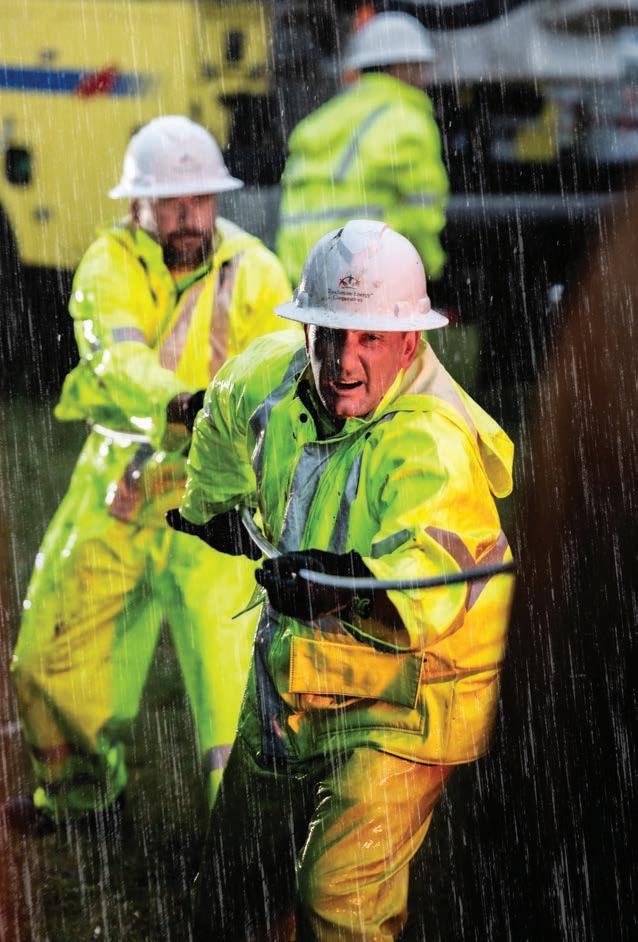









1–28 Winter Feeding Eagles—Alma. Wings Over Alma Nature & Art Center, 11 a.m.–4 p.m. Watch winter-feeding eagles as they congregate, often in large numbers, to fish the open waters below Lock & Dam #4. View them from inside the comfort of the Wings Over Alma Center. For more info, call 608-685-3303.
1 Ice Fishing Derby—Onalaska. Mosey Landing on Lake Onalaska, 6:45 a.m.–2:15 p.m. Fishing begins at sunrise and closes at 3 p.m. Purchase fishing tickets in advance or come to the heated tent in the parking area to purchase a ticket for $5 and later to weigh your catch. Four prizes for each category of: northern, bass, perch, crappie, and bluegill. Refreshments, games, food, and fun in the tent. For more info, schultzma@charter.net or call 608-792-1445.
1 Snowmobile Show and Ride—Stetsonville. Centennial Community Center, 8:30 a.m.–4 p.m. Registration 8:30–11 a.m. ($5 entry fee), trail ride at 1 p.m., and awards at 3 p.m. Food and refreshments all day, contests, raffles, and fun for all! For more info, 715-427-5441.
1 Euchre Tournament—Eleva. Pleasant Valley Community Center, 1–5 p.m. Doors open at 12:30 p.m. Entry fee $10. Cash prizes for the top three winners and a 50/50 drawing. Food and beverages available for purchase.
1 “Roll On—The Music of Alabama”—Reedsburg. Area High School CAL Center, 7–9 p.m. A tribute to country music’s all-time greatest. Great vocals and phenomenal band. Reserved tickets $35-$25. For more info or to purchase tickets, call 608-768-8928 ext. 1190.
8 Jig’s Up Blugold Ice Fishing Contest— Chippewa Falls. The View on Lake Wissota, 7 a.m.–3 p.m. Scheels Kids Klub fishing event at 11 a.m. Weighin stations at The Edge Pub & Eatery and The View on Lake Wissota. Prize distribution at The View on Lake Wissota at 3 p.m. Over $80K in cash and prizes, including a 2-year lease on a Ford F150 Truck! Tickets are $25 with one fish registered per ticket. No limit on number of tickets purchased. For rules and more info, call UWEC Recreation at 715-836-3377.
15 Ice Fishing Contest—Holcombe. Lake Holcombe Pond north of Phat Bob’s, 12–3 p.m. Free, fun ice fishing contest where kids can win money for their schools. Raffles, prizes—always a great day.
15 Winter Candlelight Hike—Babcock. Sandhill Wildlife Area, 5:30–8 p.m. Enjoy a candlelight hike through a winter wonderland. An approx. 1.5mile lighted trail will be laid out for participants to walk and explore at their own pace. Afterward, enjoy a warm campfire, hot beverages, and sweet treats. If there is snow, please bring your own snowshoes. Cost is $5, but no registration is required. For more info, email Rich Schroeder at Rich.L.Schroeder@gmail.com.
16 Cat sh/Smelt-Fry—Melrose. North Bend Lions Park, 10 a.m.–2 p.m. Pies and a 50/50 raffle will also be available. Please plan on joining us!
22 Ice Fishing Jamboree—Butternut. Donner’s Bay Resort, 7 a.m.–4 p.m. Cash prizes will be given for the largest fish caught in each category. Hot food, beverages, and raffle tickets available. For info, call 715-476-2555.

22 Vintage Snowmobile Show—Fall Creek. Brackett Bar, 10 a.m.–2 p.m. Registration 10 a.m.–12 p.m. Lunch and raffles throughout the day. At 2 p.m. there will be awards for sleds, wearing vintage attire, and a drawing for prizes such as a 1981 Artic Cat El Tigre 5000, $750 and $300 cash, and a 22-inch Blackstone griddle. For more info, call 715-559-0523 or visit the Bracketteers Snowmobile Club Facebook page.
23 Toy Tractor and Craft Show—Colfax. High School, 9 a.m.–3 p.m. Over 120 tables of all things farm toy related. Concessions available, raffles, and multiple crafters. Admission is $4 for adults and $3 for kids. For more info, email Steve at Steveacker2002@yahoo.com or call 715-962-4447.
28, March 1 Winter Sports Storm—Eau Claire. Rock Falls Raceway, Fri., 12–10 p.m. and Sat., 9 a.m.–10 p.m. Several semi-competitive race events including drag racing, barrel racing, truck tug of war, and an insane oval course. Kid’s activities, a large, heated entertainment tent, food, and refreshments will also be available. For info, email brians@fusionmanagementwi.com or call 715-559-1708.
Wisconsin Events is a public service for our readers. Due to space limits, we may need to eliminate details, so be sure to include a phone number (with area code) where callers may obtain more info. If we receive more listings than space allows us to print, we reserve the right to select those we believe will be of interest to the greatest number of readers. Please no virtual events. Events can also be mailed to: WECN, Events, 6405 Century Avenue, Suite 102, Middleton, WI 53562-2200. DEADLINE: 1st of the month prior to the month in which the event is to appear.

some quality pre-nap time with
2. Nola doesn’t want to play with Ally; her water table is more fun. Photo submitted by Grandma Patricia Abraham, a member of Riverland Energy.
3. Sawyer says good morning to her chickens and tells them what a good job they are doing laying eggs. Photo submitted by Grandma Kandi Weltzien, a member of Riverland Energy.


Send photos of kids with animals, along with a brief description, to WECN Magazine, 6405 Century Avenue, Suite 102, Middleton, WI 53562-2200. Please include the name of your electric co-op. Photos will be returned. If in good-resolution, electronic format, photos may also be uploaded via wecnmagazine.com through the “Submit a photo” tab. By submitting, sender implies that he/she has rights to and owns the image, and grants WECN permission to use the image. By submitting, the parent or legal guardian also authorizes us the right to publish the image.
February is Black History Month! Let’s take a look at a few African American inventors whose contributions helped revolutionize the way we use electricity and essential devices that power life. Read the descriptions of each inventor and their contributions, then choose the best answer to complete the description.
Annie Easley started her career in 1955 as one of the rst African Americans at NASA (when it was called the National Advisory Committee for Aeronautics), essentially acting as a human computer, performing manual computations for researchers. Annie was a gifted programmer and developed computer code that was used to analyze _____ energy projects, as well as batteries for early hybrid vehicles.
A. nuclear B. wind and solar C. geothermal
Annie Easley broke down barriers for women and people of color in STEM elds and won the admiration and respect of her coworkers.
Lewis Howard Latimer worked with Thomas Edison on the development and commercialization of the incandescent light bulb. His invented a method to manufacture _____ lament to make lightbulbs mass-producible. His method was patented in 1882.
A. carbon B. hydrogen C. silicon
Without Lewis Latimer’s contributions, our lives would never have been so bright!
Marian Croak began her career at Bell Laboratories (now AT&T) and patented more than 200 inventions. One of her greatest contributions was VoIP, or Voice over Internet Protocol. VoIP technologies are essential for today’s fast-paced digital world. VoIP allows voice functionality over an _____, including helpful features for video calls and mobile messaging.
A. airwave B. audible barrier C. internet connection
Marian Croak’s passion for advancing technology has improved our digital capabilities and overall quality of life.
Sources: Dept. of Energy, Lewis Latimer House, NASA Answswer Key | Annie Easley: B, Lewis Howard Latimer: A, Marian Croak: C

